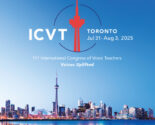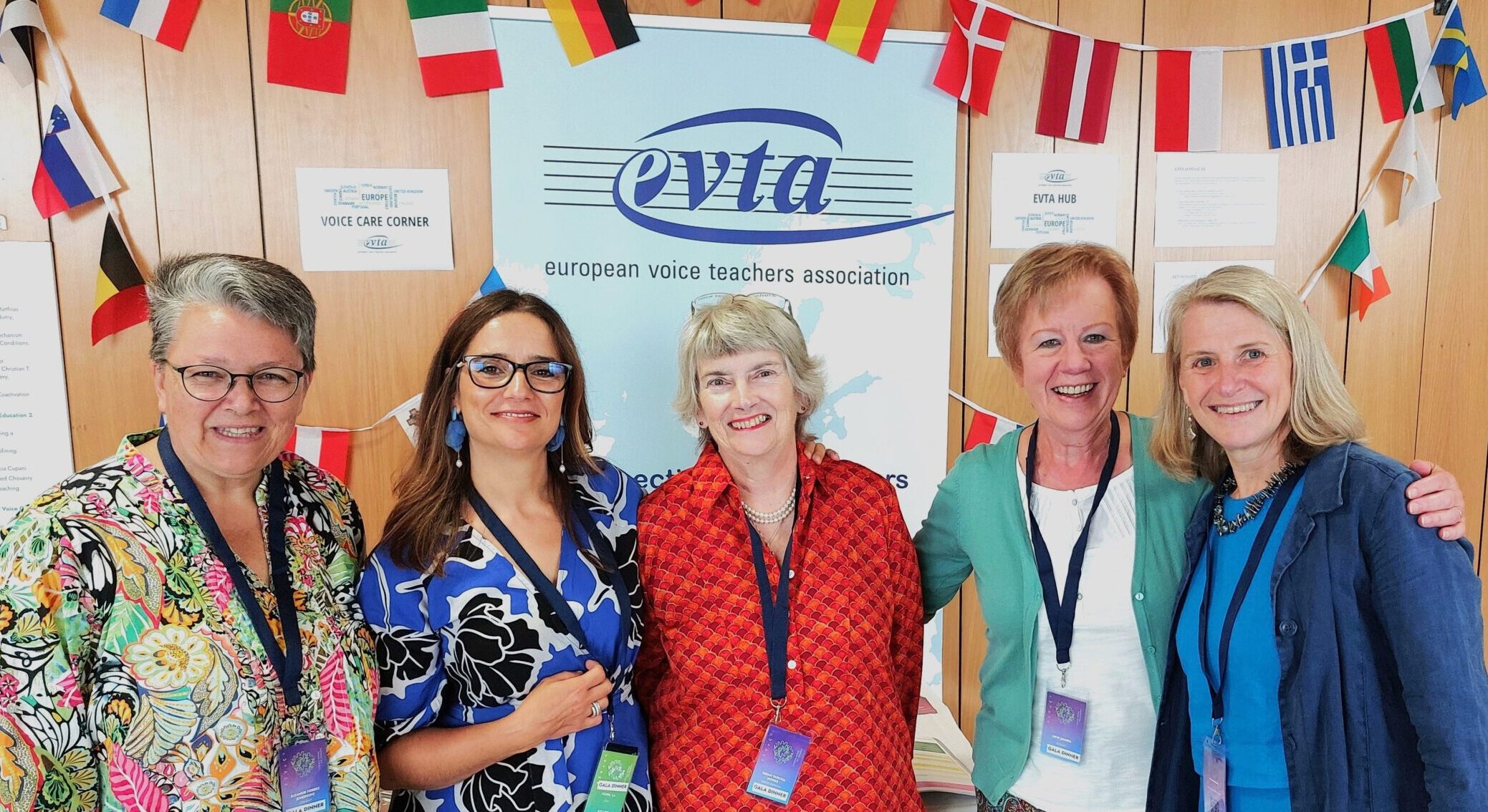
Report: EVTA at PEVoC 2024 in Santander
The annual EVTA council meeting took place on September 7, 2024 – on the last day of the PEVoC conference in Santander, Spain. EVTA members and Friends of EVTA were eligible for a group discount on the PEVoC participant fee. EVTA offered a pre-congress course Listen up! What do you hear? for the participants of PEVoC this time.
Below you can read a report about our time in Santander by Susan Yarnall-Monks, President of EVTA
EVTA pre-conference course
I am biased of course but this was an excellent 4 hours of 4 workshops “Listen Up! What do you hear? Voice Training from Non-Singer to Professional!”: Ellen Pieterse “Awakening the Senses” began with a performance without technique followed by one with technique and then asked “What did you hear?” She gave some excellent suggestions for improving the awareness of space, onset and support for singers.
Eleanor Forbes gave a clear and fascinating explanation of Cross-training and the value of this for all singers in whatever genres they used.
Lieve Jansen guided us with practical exercises on “Learning about the possibilities of Our Voices through Play”. She uses this work particularly with older singers in choirs with positive effects for the sung sound.
Finally Bo Rosenkull explored “The Sound when we sing together” using some excellent songs from his book for choirs.
It was 2013 that we last did a pre congress course and I found it inspiring and challenging for all voice users to think again about how they use their ears. Perception had a prominent place in many conference papers which really pleased me as that was the focus for my PhD.
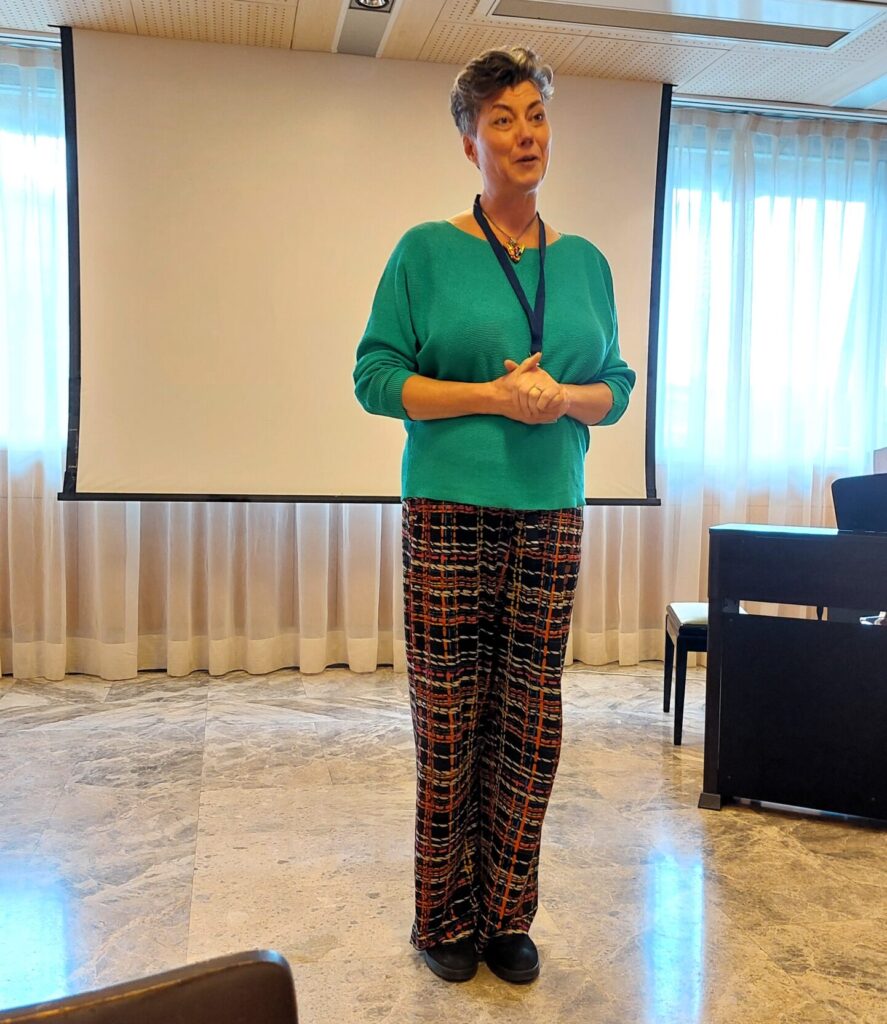
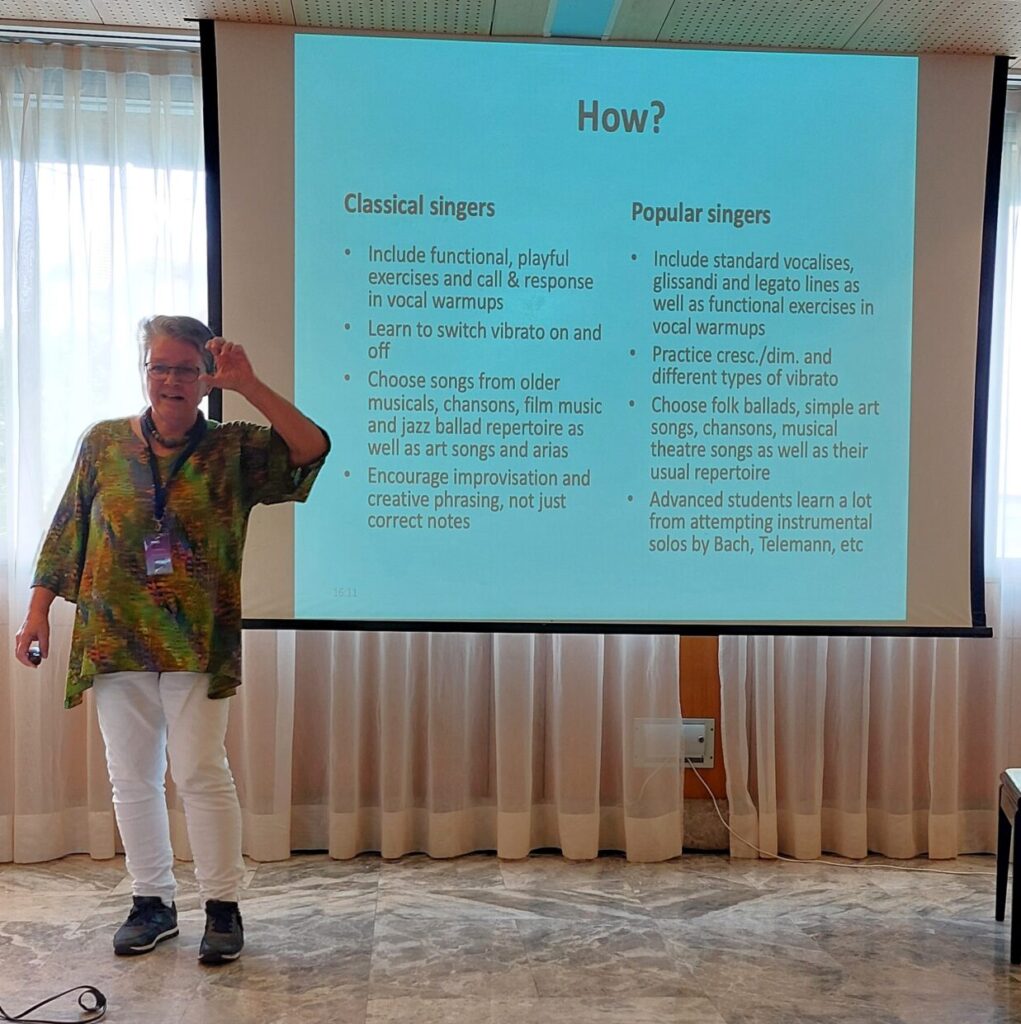
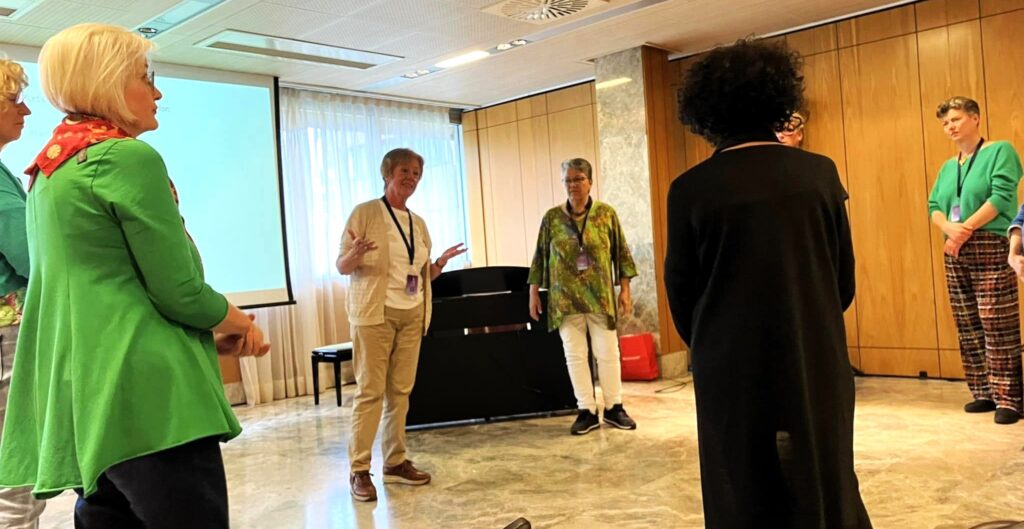
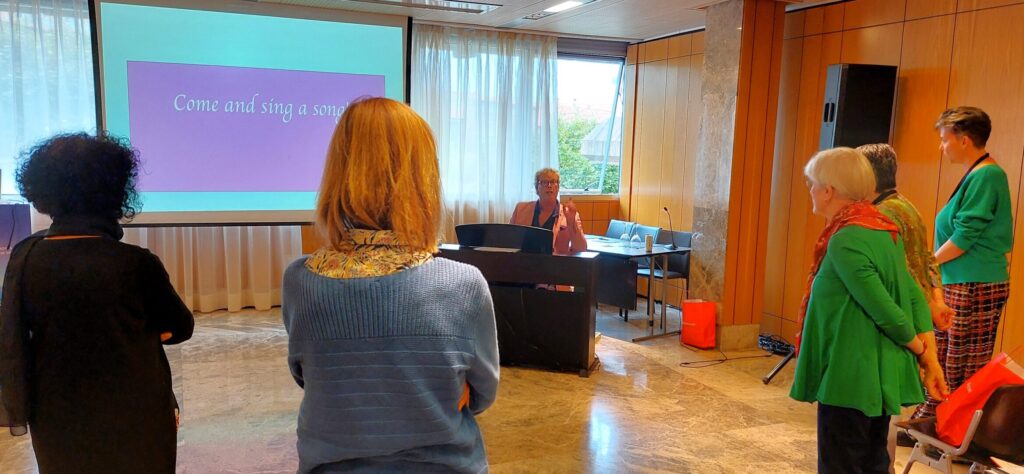
PEVoC conference program
On Thursday I started early with a workshop by Jenna Brown on “Exploring Clean Language Coaching as a Somatic Imagination Strategy for Singing Pedagogy”. This approach was new to me but it comes from a counselling program though I think it does work for making the language we use in teaching studios more student centred and appropriate. She advocated using imagery and metaphor as well as scientific terminology as images can explain the unknowable, provide a shortcut to outcomes, connecting the mechanic to the artistic and connecting body, mind and voice. It was good to be reminded not to impose my language on a student that may well be mis-understood but to move from the student’s language to facilitate listening and perception and to keep bringing it back to the song.
Ken Bozeman is always worth a listen but he had very little time to explain “Resonance Tuning Strategies for Functional Efficiency Using the Chiaroscuro Whisper.” I’m hoping the Latvian association will allow EVTA to access the recorded lectures Ken and Joanne Bozeman will present when they do their 2 week visit to Latvia after Pevoc. He spoke about using the paintbox of vocal colours, the balance between the under and over vowels, in the chiaroscuro, dark/light sounds.
After the opening ceremony we had the first keynote by Sophie Scott “What can We learn about Voices by Thinking about the Brain?” This was a clear and hugely informative session with excellent slides showing areas of the brain lighting up when speaking, singing, feeling emotions and all rather difficult to put into words. But one thing I took from this was how we balance between voluntary control when we perform and the involuntary emotional responses when we sing. Anyone who has had a fit of giggles while singing or has had to sing at the funeral of a loved one will know exactly how the ancient ‘primitive’ responses can surface no matter how much we have prepared ourselves. She spoke briefly about foreign accent syndrome when the brain has been damaged but also highlighted the identity theft of voices which was in the news that day by AI and the media.
I was asked to do some poster judging and and one of them was by the team, Andrea Nacci et al. who had presented in Turkey when Bo went last April and it was about the benefits of “Hydration Magic: Moist Gauze and its effects on dysphonic voice”. They had found that even 2 minutes using a moist gauze over the face had produced positive improvements in normal voices and they are undertaking similar research with dysphonic voices. I also tried this with my students and found it helpful particularly in air conditioning and post pandemic.
The Round Table: “REAL TIME VISUAL FEEDBACK OF ACOUSTICAL AND PSYCHOLOGICAL SIGNALS” with Filipa Lã, Johan Sundberg, Mauro Fiuza and Sten Ternström did not disappoint with a very distinguished panel. I had heard much of this before and I do use it occasionally in my teaching with great benefits. The following workshop followed a similar pattern with Hilde Haraldsen from Norway and her student singing an entire aria while watching the laryngoscope down her throat, an amazing experience to watch but also truly appreciated by the vocal students Hilde works with. Then Alfredo Borragán (Pevoc organiser) illustrated using the endoscopy in unconventional ways by exploring the pharyngeal space of the singer and voice user to identify muscle strain and potential tensions.
Lunch was in the restaurant and was pleasant and allowed, within the hubbub of 400 voice specialists all sharing their morning sessions, some conversation!
We had set up the EVTA hub, a table with handouts, which we manned when we could and also used it as a Voice Care Corner. That proved quite a meeting place for friends and colleagues and many photo opportunities with EVTA members plus the possibility of a new member country, Greece… more to follow.
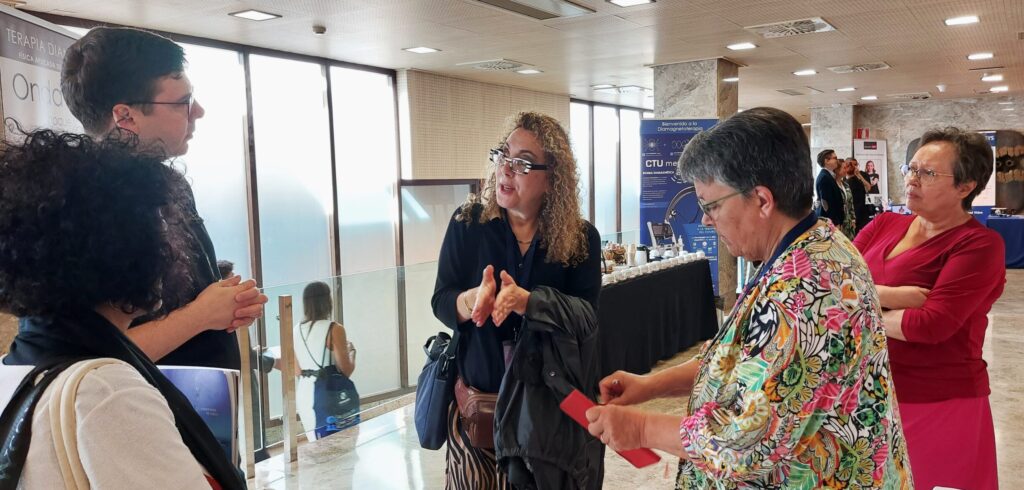
I chaired a session on Vocal pedagogy, learning and education in the afternoon and we had 3 presentations on
- Singing as a tool for learning English as a second language in Argentina with Philip Salmon
- Application Study of the Voice Range Profile in Fach classification with Liyan Han from China
- Medicine Meets Arts. Opera Song Students Experiences of undergoing Laryngoscopy to Enhance Vocal Development Hilde Haradsen et.al. which developed what we had seen in one of the morning round tables.
An excellent group of papers delivered in perfect time but sadly 10 minutes to present research is really challenging.
Friday morning began with an 8am start of vocal warm ups delivered with much skill and enthusiasm by Craig Lees, Declan Davies, and Esteban Sanz. It certainly woke me up in a most enjoyable way. I wish I could share the videos I took!
I went to a session on Multidisciplinary Research on Music Group Activities ably chaired by Jenevora Williams featuring Kai Koch a German professor working with dementia patients in choirs to great acclaim, Dana L.C. Greaves on the benefits and challenges of Virtual Groups Singing which took off in the pandemic and continues. Sefer Ilban and James Han from USA talked about Conflict and Resolution in Choral situations, and Emily Cooper from Sheffield University talked about her work singing with patients who have inducible laryngeal obstructions. Finally the amazing David Howard gave a brief but vitally important presentation on the intrinsic pitch of vowels, something few understand in A Capella Choral Singing.
There were interesting presentations by Marisa Lee Naismith on CCM music teaching in Australia, Jenna Brown on the Philosophy of Mind and the imagery versus science debate. Alicia Cupani talked about teaching singing with Music Teachers in Brazil.
We had a truly international delegation at Pevoc from around the world, I met people from South America, USA, Australia, China well as European colleagues.
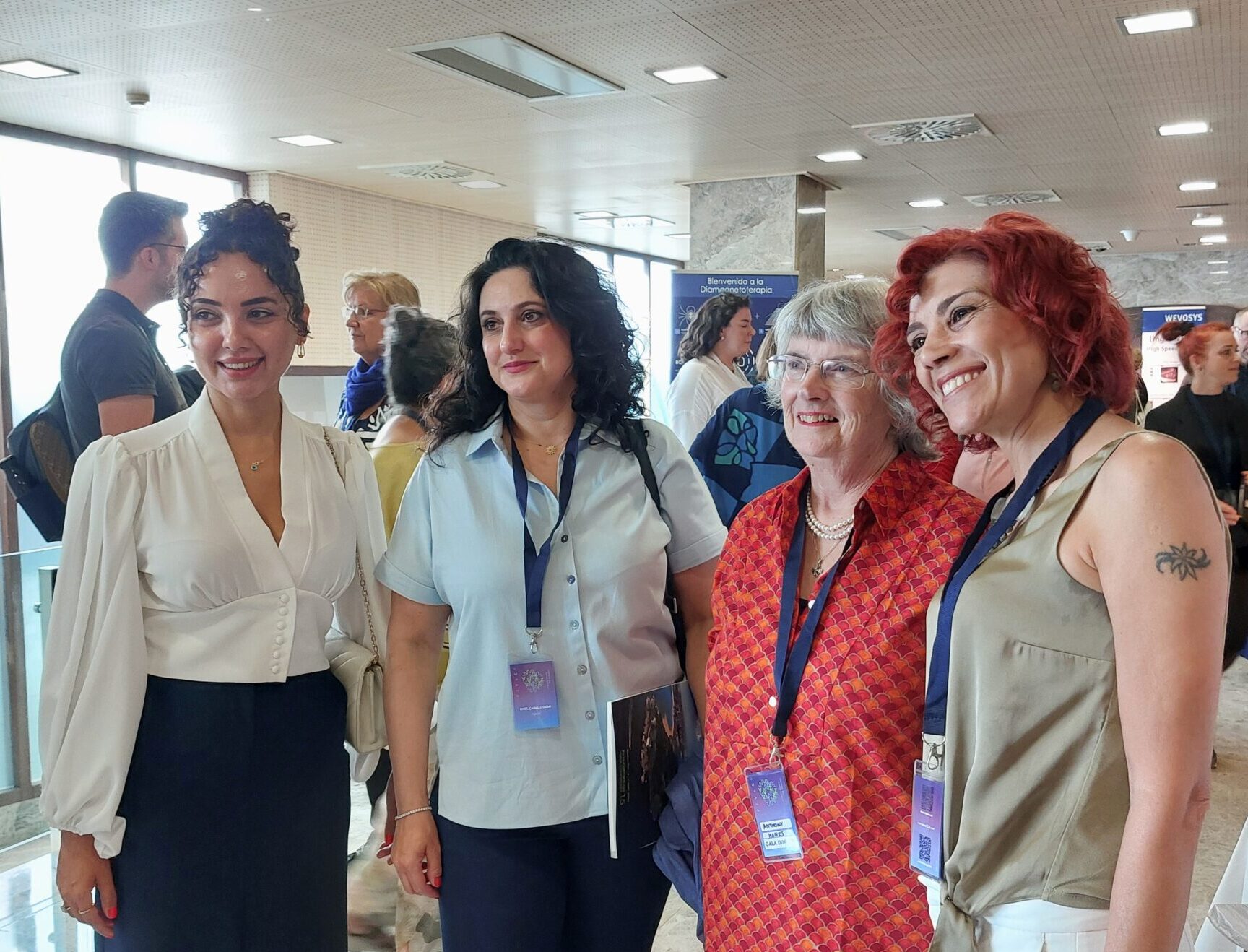
I went to the masterclass with Jale Papila but while it was lovely to hear the singing and teaching , 20 minutes does not do anyone justice. There was also a very brief description of the “Voice Colour Palette” by Raffaella Misiti who was influenced by the great Kristin Linklater.
I then attended for the last time, the Pevoc advisory board and introduced Ellen Pieterse to them all as our new President.
In the afternoon we had an inspiring presentation by Eleanor Forbes and Barbara Hoos de Jokisch on “The 7 Basic Elements of Voice Training” a systematic approach to developing vocal technique. A wonderful book newly translated by Eleanor from the German. Again so little time was available to highlight the many technical exercises developed from the great teacher, Franziska Martienßen-Lohmann’s manuscripts beautifully edited by Barbara into a meaningful way for the 21st century.
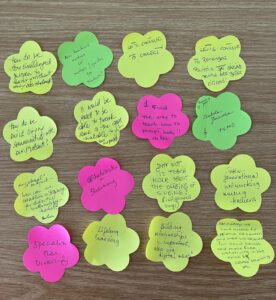
Then it was my brief workshop “What next for Vocal Teaching?” which produced some important conversations about how we teach post pandemic and the challenges for the future with AI, online lessons and information overload on the internet.
I managed to attend one of the final keynotes on “Neuro-Unconcert: Delving into the fascinating realm of Neurobiology and Music” with Mara Dierssen and I was so glad I did as I clicked away on my phone with practically all her slides. She was a great presenter from Spain and a friend of Alfredo, it was all about the brain and singing, entertaining as well as informative.
The gala dinner was held in the Santander Casino and the food celebrated the cuisine of the Cantabrian Region, once again the noise levels rose as all the singers and scientists got talking, followed by speeches and dancing.
Saturday the focus was on the hybrid Council meeting which we had in the morning and of course, as the only legal meeting it had to be done all correctly with important elections and matters to discuss. It was heartening to hear in the room and online all the connections being made across our associations with new initiatives and plans for the coming years.
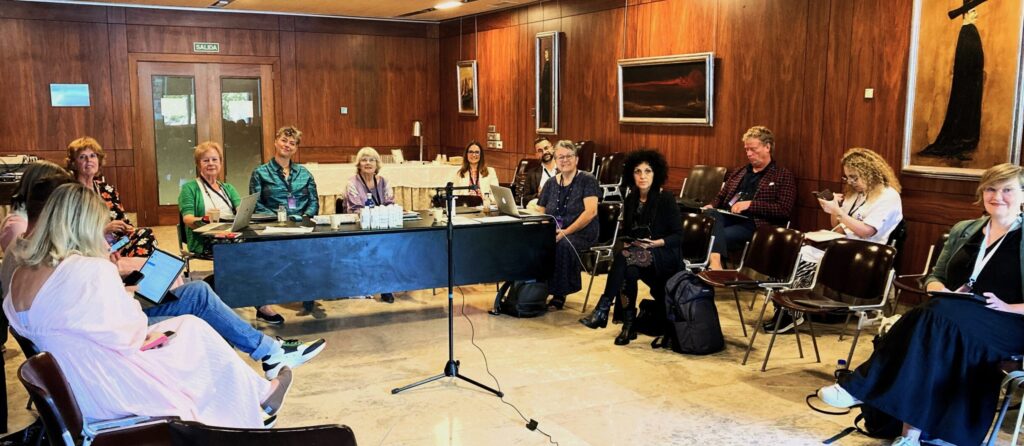
The closing ceremony was another delightful concert of Spanish song, thanks and farewells and then the EVTA Meet and Greet supper was held in a typical Spanish Bodega, with networking in many languages amongst our 24 colleagues. A perfect end to a busy week.
